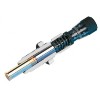Howdy Y’all!
This one is pretty straightforward, I’m looking for the does that are the easiest to adjust when changing loads.
I’m looking at picking up a few guns in versatile calibers (starting with a 357 magnum and hopefully a 44 magnum not long after that). With my 9mm and 10mm I just have one pet load, and don’t play around much with bullet weights or seating depth, but I’d like to take advantage of the versatility that the Keith cartridges have to offer, and not have changing the crimp or seating depth be a major headache when I decide that I want to switch from lighter specials to heavy for caliber magnums.
Any other input or advise in this area is also welcome.
Thanks guys
This one is pretty straightforward, I’m looking for the does that are the easiest to adjust when changing loads.
I’m looking at picking up a few guns in versatile calibers (starting with a 357 magnum and hopefully a 44 magnum not long after that). With my 9mm and 10mm I just have one pet load, and don’t play around much with bullet weights or seating depth, but I’d like to take advantage of the versatility that the Keith cartridges have to offer, and not have changing the crimp or seating depth be a major headache when I decide that I want to switch from lighter specials to heavy for caliber magnums.
Any other input or advise in this area is also welcome.
Thanks guys






